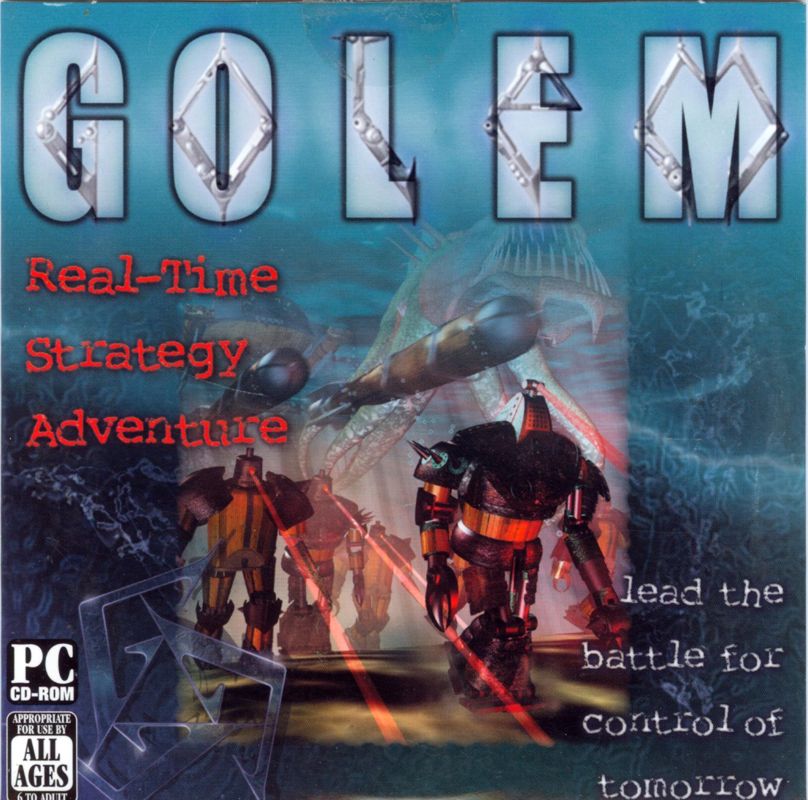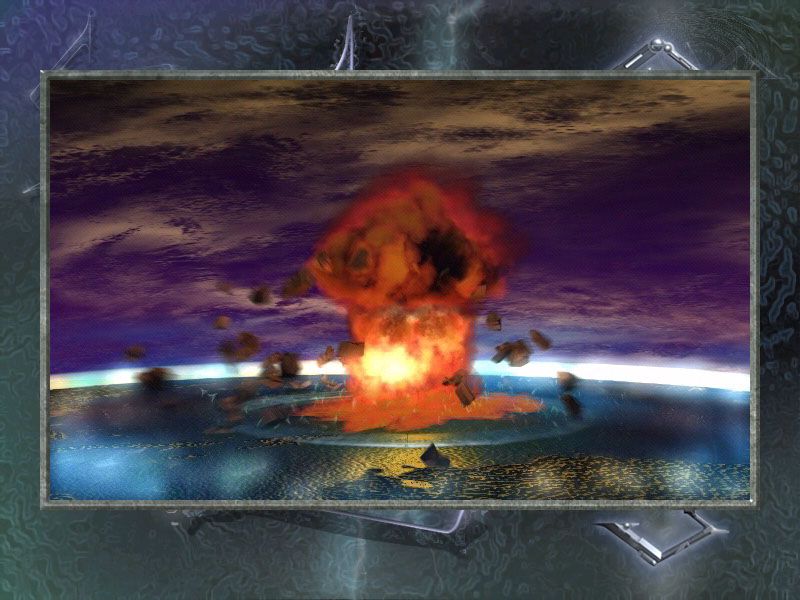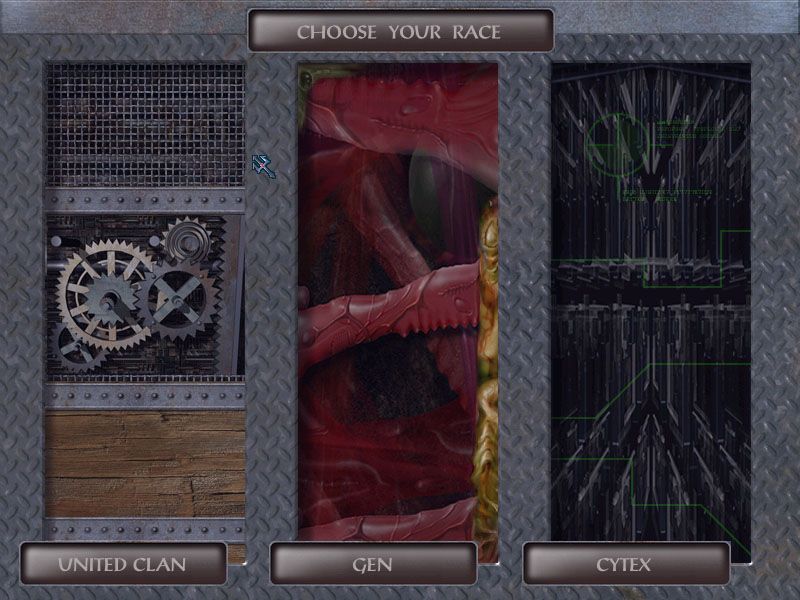Retro Replay Review
Gameplay
Golem delivers a classic real-time strategy experience rooted in resource management, tactical positioning, and faction-specific strategies. Whether you’re facing off against AI opponents in single-player mode or duking it out with friends in hot-seat matches, the core loop revolves around harvesting vital materials, constructing bases, and fielding robust armies. The pacing strikes a satisfying balance between early-game scouting and late-game sieges, ensuring that each match feels dynamic and engaging without dragging on unnecessarily.
(HEY YOU!! We hope you enjoy! We try not to run ads. So basically, this is a very expensive hobby running this site. Please consider joining us for updates, forums, and more. Network w/ us to make some cash or friends while retro gaming, and you can win some free retro games for posting. Okay, carry on 👍)
One of the game’s standout features is the diversity of its three factions. The United Clan lean heavily on versatile, well-rounded units and fortifications, making them a solid pick for newcomers. The Genes, by contrast, boast powerful but often unwieldy mutant brutes capable of devastating frontline assaults. The Cytexes excel at hit-and-run tactics and high-tech weaponry, allowing clever players to outmaneuver opponents with precision strikes. This asymmetry encourages experimentation and replayability as you learn to play to each faction’s strengths.
Building your economy requires careful placement of harvesters on resource nodes, as well as timely upgrades to processing facilities. A slip in resource gathering can leave you scrambling for reinforcements, so effective micromanagement is key. The user interface streamlines many of these tasks with context-sensitive menus and hotkeys, though a slight learning curve exists for mastering unit production queues and advanced formations. Veteran strategy gamers will appreciate the depth, while newcomers may need a few skirmishes to find their footing.
Multiplayer matches in Golem are a familiar affair but enriched by the hot-seat format, which fosters a more deliberate, chess-like atmosphere. Since players take turns on the same machine, there’s an intensity reminiscent of board games—every decision counts, and revealing your strategy can be as much a mind game as a tactical choice. Although this setup limits you to local play, it’s perfect for casual gatherings or anyone looking to rekindle the competitive spirit without an internet connection.
Graphics
The visual presentation of Golem is anchored by its opening FMV sequence, which vividly depicts towering radioactive meteors shattering the earth’s crust and reshaping civilization. These cinematic moments set the tone for a post-apocalyptic world rife with danger and mutation. In-game, terrain textures and environmental effects remain crisp, with scorched earth plains, crumbling coastlines, and irradiated wastelands rendered in a muted palette that underscores the game’s grim premise.
Unit models are distinct and detailed, ensuring that you can quickly differentiate between the hulking Genes brutes and the sleek Cytex skimmers even during intense skirmishes. Base structures exhibit a practical, industrial design—harvester towers and energy pylons look appropriately weathered and utilitarian. While Golem’s engine may show its age compared to modern titles, the game compensates with clear unit animations and satisfying visual feedback when orders are executed or when structures erupt in flame.
Special effects, such as explosions, energy beams, and radioactive plumes, remain a highlight, providing plenty of spectacle without overwhelming the battlefield. Shadows and lighting reinforce the mood, especially during dusk-and-dawn missions where long shadows stretch across ruined cityscapes. Though the audience expecting ultra-high-resolution textures may feel something is missing, Golem’s art direction succeeds in creating a cohesive, immersive environment.
The UI, while functional, could benefit from a slight overhaul. Menus are neatly organized, but the iconography can be opaque initially, requiring you to hover over each ability for tooltips. Once you’ve acclimated, however, the interface becomes a powerful tool for orchestrating large-scale engagements. In sum, Golem’s graphics serve the gameplay and narrative effectively, even if they don’t push the boundaries of modern visual fidelity.
Story
Golem’s narrative unfolds against the backdrop of a world forever altered by a cataclysmic meteor shower that unleashed widespread radiation. The introductory FMV doesn’t just recite lore—it plunges you into the moment of impact, making you feel the ground quake and the sky rain fire. From there, each campaign mission expands on how the three factions struggle for dominance: the unmutated United Clan, the physically formidable Genes, and the intellectually superior Cytexes.
The campaign structure interweaves mission briefings with cinematic cutscenes, painting a broad tapestry of political intrigue, survival, and ruthless ambition. Dialogue between faction leaders reveals conflicting ideologies—while the United Clan cling to pre-apocalypse ideals of order and cooperation, the Genes view might as the only path to security, and the Cytexes pursue knowledge at any cost. This ideological friction fuels compelling narrative arcs and unexpected betrayals.
Despite the trope of post-apocalyptic rivalry, Golem injects fresh tension by exploring how radiation can both corrupt and empower. Side missions often revolve around securing experimental technologies or rescuing surviving enclaves of unmutated humans. These objectives feel meaningful rather than perfunctory, immersing you further in the world’s plight. While character development isn’t as deep as story-driven RPGs, the game’s emphasis on factional dynamics creates a solid foundation for dramatic confrontations.
For players who appreciate lore-rich RTS titles, Golem offers ample backstory in its in-game encyclopedia and mission logs. Reviewing faction profiles reveals unexpected crossovers—genetic fragments hidden in ancient labs, Cytex philosophical treatises hinting at a dangerous metamorphosis, and Clan chronicles lamenting the loss of humanity’s “golden age.” These details reward those willing to delve into supplementary materials and enrich the narrative beyond battlefield skirmishes.
Overall Experience
Ultimately, Golem stands as a robust RTS offering a satisfying blend of strategy, storytelling, and visual flair. Its asymmetrical factions ensure that no two matches feel alike, and the hot-seat multiplayer mode provides a nostalgic spin on competitive gaming. Whether you’re a veteran commander looking for a fresh challenge or a newcomer eager to explore classic-style strategy, Golem has plenty to offer.
However, the game is not without its quirks. The user interface, while generally serviceable, requires initial acclimation. Multiplayer is confined to local play, which may disappoint those seeking online matchmaking. Additionally, the graphics, though thematically consistent, lack the polish of contemporary releases. These shortcomings are minor compared to the game’s strengths in pacing, faction diversity, and narrative scope.
Replay value remains high thanks to skirmish mode, sandbox matches, and varied difficulty settings. Tackling campaigns with each faction reveals new strategies and story surprises, encouraging you to revisit the battlefield multiple times. The static camera angles and occasional slowdown during massive engagements are modest trade-offs for the depth and tactical richness on offer.
In conclusion, Golem delivers a compelling post-apocalyptic RTS experience that draws you into its irradiated world and keeps you engaged through thoughtful design and strategic variety. If you appreciate a good challenge and don’t mind a bit of retro polish, Golem is a worthy addition to any strategy enthusiast’s library.
 Retro Replay Retro Replay gaming reviews, news, emulation, geek stuff and more!
Retro Replay Retro Replay gaming reviews, news, emulation, geek stuff and more!









Reviews
There are no reviews yet.